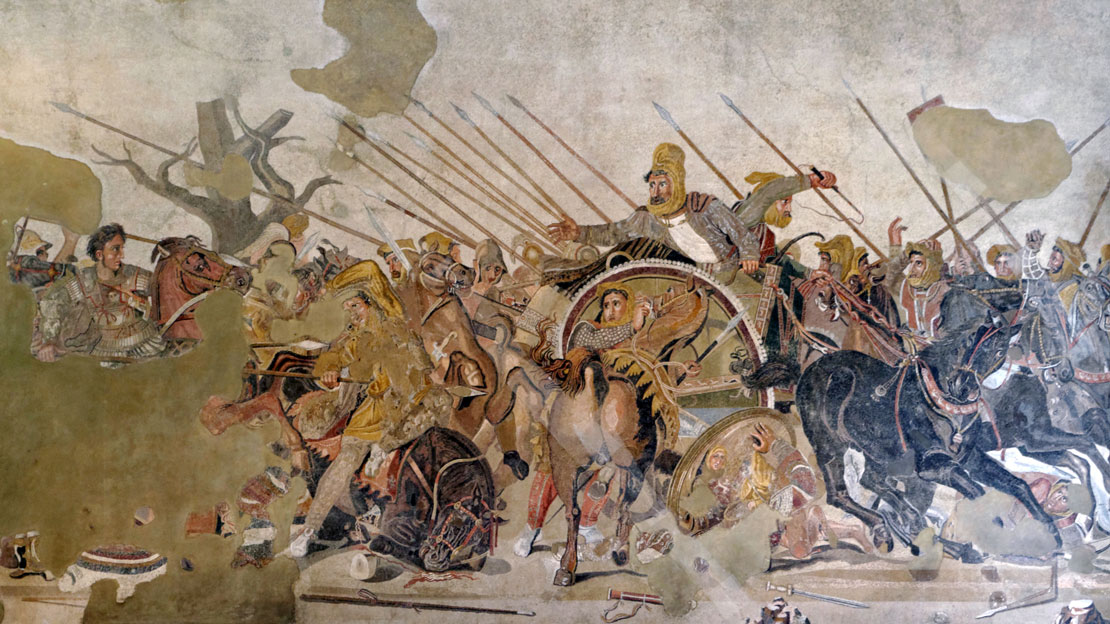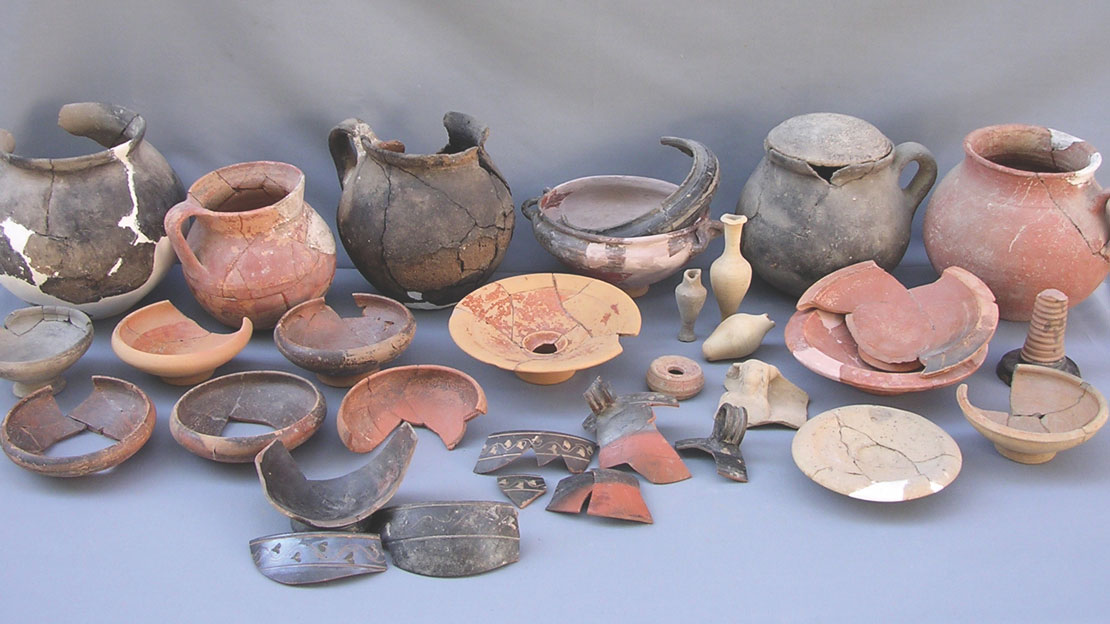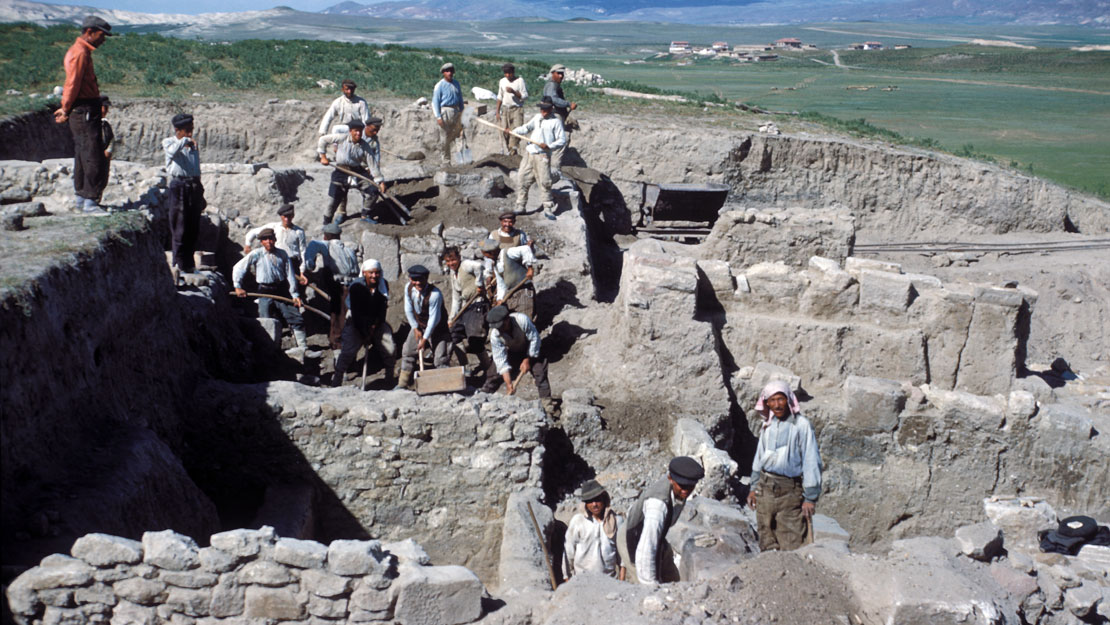Hellenistic Gordion

The Hellenistic Period at Gordion begins with a visit by Alexander during the first year of his campaign against the Persians, in 333 BCE, when he allegedly cut the Gordian Knot. His visit can be taken as an indication of the strategic location of the site for trade, transport, and military movement from western Asia Minor to Central Asia. Many aspects of Phrygian culture subsequently began to disappear: Greek gods were worshiped or at least recognized, while Greek inscriptions now became the norm, sometimes with Greek or Greek-sounding personal names.

In the mid-third century there was a dramatic change in material culture, one that marks the arrival of European Celts or Galatians at Gordion (Late Hellenistic). The cultural disruption is illustrated by the breaking up of sculpture and inscriptions in the Greek style and their reuse as paving stones. Unique deposits of human and animal bone have been recovered from the Lower Town, providing convincing evidence of Celtic ritual practices, including the removal of human heads. Although the Young excavations defined only one “Galatian” architectural phase, we now know that there were three, and that the site was abandoned at least twice. It is the second abandonment that is linked to events in 189 BCE, when a Roman army under Manlius Vulso arrived at Gordion to find it empty, the Celts having fled to a nearby fortress where they were reportedly massacred (Livy 38.18-19). The third and latest Hellenistic phase (ca. 150–100 BCE) represents a reoccupation of the settlement by Galatians, who left evidence of their identity in the form of distinctive iron fibulae of a type common in Europe during the second century BCE.
The form of the settlement was significantly altered during the Hellenistic period. In addition to the abandonment of the walls of the Eastern Citadel, the road between the Eastern and Western Citadels was filled to make a single large residential area elevated high above the surrounding plain. At the same time, the Lower and Outer Towns were abandoned, emphasizing Gordion’s appearance as a unified town. The final remnants of the Phrygian citadel had clearly been abandoned by the beginning of the Hellenistic period, and a series of houses datable to the third and second centuries were built over their remains. The Hellenistic occupation level is thick, including at least two construction phases dating to Early Hellenistic times, and three construction phases assigned to the Late Hellenistic period. Two of the Late Hellenistic phases were abandoned, leaving rich deposits filled with coins, painted plaster, terracotta figurines, glass vessels, stone and iron tools, and alabaster statuettes. As many as 1,500 complete Hellenistic vessels have been inventoried.


Although most of the Hellenistic architecture was removed during excavation of Phrygian levels, detailed drawings of many individual houses survive. We can reconstruct at least five large houses of Later Hellenistic date as well as many smaller ones, the final phases of which date to the very end of Hellenistic occupation at Gordion. All of the architecture, however, exhibits some evidence of rebuilding and modification, so some of the houses may have been constructed during the Early Hellenistic phase. Although the houses were arranged randomly throughout the site, they were quite spacious, with the largest measuring ca. 20 x 10 meters. The mudbrick walls were plastered; every house had an associated courtyard; and several even featured upper stories.
The Hellenistic pottery shows no abrupt change in technology, form, function, or decoration. On the contrary, Phrygian, Greek, and Galatian elements appear throughout the entire assemblage, often in the same household context, and sometimes all within the same vessel. During the Late Hellenistic period, each household contained a mismatched set of dishes and bowls, some light brown and others gray, some painted and others plain. Very rarely does one Gordion house contain two identical vessels. Nevertheless, the entire ceramic corpus is more standardized than the Early Hellenistic corpus, most likely due to greater organization and centralization in ceramic production. The pottery and architecture reveal something of the temperament of the inhabitants of Hellenistic Gordion: although clearly aware of the trends set by major Hellenistic centers further to the west, they did not follow them closely. Instead, they felt free to draw from a variety of sources: long-standing Phrygian traditions, popular Greek imports, neighboring Lydian contacts, and the new Galatian elements.
Further reading
- Cox, D. H. 1966. “Gordion Hoards III, IV, V, and VII,” American Numismatic Society, Museum Notes 12, pp. 19-55.
- Darbyshire, G., S. Mitchell, and L. Vardar. 2000. “The Galatian Settlement in Asia Minor,” Anatolian Studies 50, pp. 75-97.
- Henrickson, R. C., and M. J. Blackman. 1999. “Hellenistic Production of Terracotta Roof Tiles among the Ceramic Industries at Gordion,” Oxford Journal of Archaeology 18.3, pp. 307-326.
- Roller, L. 1987. “Hellenistic Epigraphic Texts from Gordion,” Anatolian Studies 37, pp. 103-33.
- Voigt, M. M. 2003. “Celts at Gordion: The Late Hellenistic Settlement,” Expedition 45, pp. 14-16.

